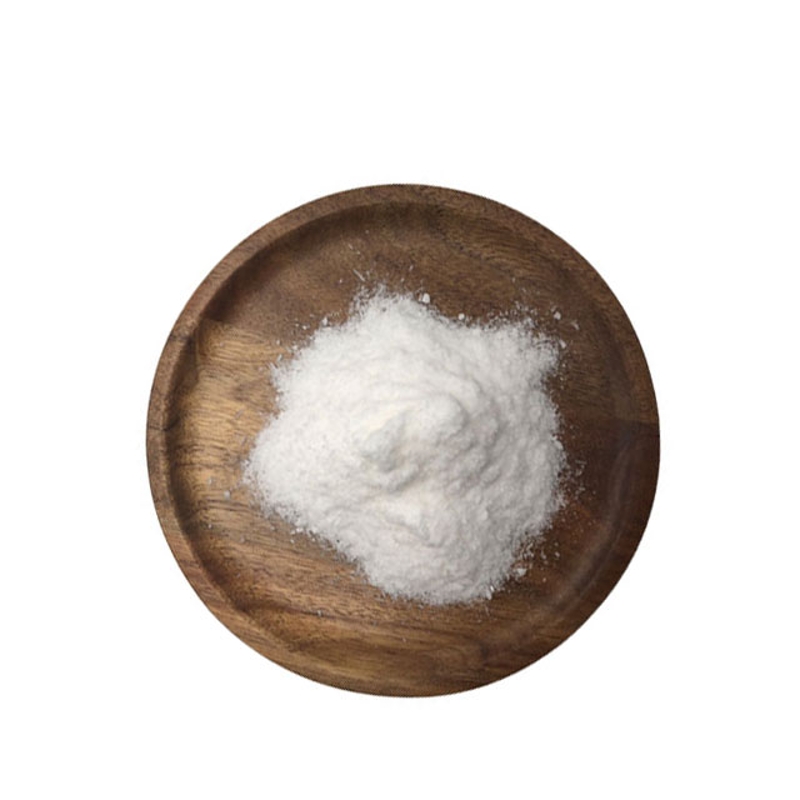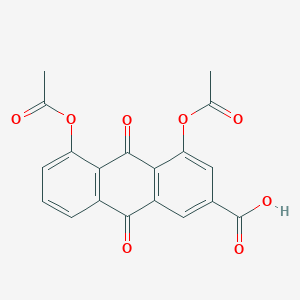-
Categories
-
Pharmaceutical Intermediates
-
Active Pharmaceutical Ingredients
-
Food Additives
- Industrial Coatings
- Agrochemicals
- Dyes and Pigments
- Surfactant
- Flavors and Fragrances
- Chemical Reagents
- Catalyst and Auxiliary
- Natural Products
- Inorganic Chemistry
-
Organic Chemistry
-
Biochemical Engineering
- Analytical Chemistry
- Cosmetic Ingredient
-
Pharmaceutical Intermediates
Promotion
ECHEMI Mall
Wholesale
Weekly Price
Exhibition
News
-
Trade Service
!--,2020 / / / --- New Coronavirus SARS-CoV-2 causes coronavirus disease (COVID-19) in 2019 and is now raging around the world.
it is an envelope virus with RNA in its genome.
SARS-CoV-2 infection may be asymptomatic and may cause a wide range of symptoms, from mild upper respiratory tract infections to life-threatening sepsis.
clinical manifestations of COVID-19 include asymptomatic carriers and outbreaks characterized by sepsis and acute respiratory failure.
there is no human vaccine for SARS-CoV-2, but about 120 candidates are under development.
In a new study, researchers from the Pasteur Institute in France, the French National Centre for Scientific Research (CNRS), the French National Institute of Health and Medical Research (INSERM) and the University of Paris conducted a preliminary study to assess the reliability of several laboratory tests in order to better understand the antibody response spectrum against SARS-CoV-2 and the spread of the virus in the population.
they developed and evaluated four methods for detecting SARS-CoV-2 antibodies, as well as two methods for detecting and mesothing antibodies.
these test methods, called laboratory assays, are the first phase of COVID-19 epidemiological studies.
study was recently published in the journal Science Translational Medicine under the title "A comparison of four serological assays for detecting anti-SARS-CoV-2 antibodies in human serum samples from from the population differents".
between the four serological test methods, pictured is Science Translational Medicine, 2020, doi:10.1126/scitranslmed.abc3103.
assessing the prevalence of asymptomatic and symptomatic SARS-CoV-2 infections and their antibody response spectrum is an important part of containing the outbreak and clarifying how the virus is transmitted.
, PCR testing methods are widely used in France and around the world to diagnose COVID-19 and to detect and quantify SARS-CoV-2 RNA.
these virological testing methods are essential for identifying and monitoring active infections.
serological tests are also being used.
There are two types: antibody detection, which shows whether a person has produced antibodies against the SARS-CoV-2 protein and therefore whether the virus has been previously infected;
the importance of reliable testing the reliability of these tests is critical.
, the authors set out to develop serological testing methods and conducted a preliminary study to assess the reliability of the four test methods by measuring SARS-CoV-2 antibody levels.
they also developed two new test methods, which gave them an added point of comparison.
they took a series of blood samples from different categories of people.
These samples for evaluating test methods can be broken down as follows: (1) samples from 400 pre-epidemic (2017-2019) individuals, as a comparative sample, to determine the specificity of the test method by ensuring that there are no or very few "false positives"; The sensitivity of the test method was determined to enable scientists to study the dynamics of antibody reactions; (3) samples of 209 people with mild symptoms (e.g. fever or cough) collected in the French province of Oise département on 3 and 4 March 2020; and (4) samples of 200 asymptomatic blood donors collected in the province of Vaz between 20 and 24 March 2020.
Seroprevalence results 32% of people with mild signs compatible with COVID-19 detected serotyt positive (presence of antibodies) and 3% of asymptomatic donors tested positive for serotonies within 15 days of sampling.
antibody response time these authors measured the antibody response time in hospitalized COVID-19 patients.
antibodies appear 5-6 days after the first symptoms and are positive after 7-14 days.
in individuals with mild or asymptomatic symptoms, the timeline is likely to be longer and the antibody titration (concentration) is likely to be lower.
and evaluation of test methods, the authors designed four laboratory assays to assess SARS-CoV-2 antibody levels in human serum.
ELISA test method: The two ELISA test methods are based on the SARS-CoV-2 full-length N protein (ELISA N) or SARS-CoV-2 prickly protein (S) extracellal domain (ELISA S) conventional test method.
: These two test methods are based on an easy-to-port technology that can be used in commercial kits.
ELISA S test method is slightly more sensitive than the ELISA N test method.
questions have been raised about how to use or bring them to market on a large scale because they are currently indoor testing.
based on similar principles has been launched and is currently being evaluated by the French National Respiratory Infection Reference Centre (CNR).
based on at least two serological testing methods developed by the Pasteur Institute, CNR uses SARS-CoV-2 antibody-negative or positive serum samples to evaluate the performance of commercial assays.
S-Flow test method: this test method can detect SARS-CoV-2 protrusion proteins on the cell surface under natural configuration.
it is highly sensitive and specific.
its test results are similar to ELISA S and are more sensitive to low antibody levels.
this method requires specialized equipment (flow cytometers), which are less widely used than enzyme markers commonly used in medical laboratories.
makes it more suitable for epidemiological research than for large-scale diagnostic tests.
!--/ewebeditor:page--!--ewebeditor:page-title"--Lips test method: This "immune precipitation" test method uses different techniques than other testing methods to detect antibodies that bind to SARS-CoV-2 N or S proteins or their substructory domains.
this test method provides a detailed map of the viral protein regions targeted by the antibody response.
, it uses different "target antigens" and the detection sensitivity is different depending on the antigen detected.
for this new study, it used part of the N protein and part of the S protein (S1).
this test method can also be used in most animals.
the authors also developed two tests to detect neutral antibodies in serum samples of infected people: one using the infectious SARS-CoV-2 virus, which requires access to a BSL3 laboratory, and the other based on a "pseudovirus" that can be used without the need for a BSL3 facility.
implementation of the neutral testing method using infectious SARS-CoV-2 is complex because the virus needs to be treated in the BSL3 laboratory.
it uses a fixed dose of the SARS-CoV-2 virus, which can destroy cells 100%.
mixing it with different serum diluents, the authors looked at whether the presence of SARS-CoV-2 antibodies was sufficient to normally correct the virus and inhibit its proliferation, thereby preventing cell damage.
the authors also developed a neutral testing method called Lenti S, which is based on a noncommunicable fake virus in place of the SARS-CoV-2 virus.
this test method does not need to be controlled in a bios security laboratory and is therefore easy to implement on a large scale.
the ELISA test method for detecting antibodies, the ability of the antibody to prevent the virus from entering the cell is measured by the nalocation test method.
, it can determine whether a person has antibodies that limit the proliferation of the virus and may provide protection against further infection with SARS-CoV-2.
authors are keen to adapt this test method so that it can be used for high-volume testing.
further research is needed to determine the number of neutral antibodies that may give protective effects and their persistence over time.
the correlation between several test methods in order to evaluate the comparative reliability of these test methods, the authors compared them using three queues.
in hospitalized patients, serological tests based on N and S proteins obtained a similar number of positive cases, and diagnostic applications tested for anti-S1 antibodies with low sensitivity, the latter aimed at investigating the correlation with protection.
S-Flow and ELISA S test methods, as well as a combination of Lips N-S1, provide very similar results for symptomatic individual queues from vaz province, with higher detection levels than other test methods.
only S-Flow and ELISA S tests tested positive among blood donors.
: (1) The authors compared the performance of four test methods for detecting SARS-CoV-2 antibodies.
Overall, they perform well, varying in sensitivity depending on the test method, especially the target antigen; (2) in terms of neutral antibody testing methods, the false virus neutrality test method is simple and effective, but requires cell culture facilities and special equipment, the serological test method is used to estimate the level of antibodies binding to the virus, rather than predicting their function, and (3) the authors are currently establishing correlations to estimate antibody levels based on different parts of the blood virus. Samples have the ability to median; (4) the presence of in-blood and antibodies may indicate protective effects against further infection, especially when the titration is high, but this has not been formally confirmed; (5) serological testing methods can be used in epidemiological studies to determine sero-positive rates in specific populations; and (6) there is significant viral circulation in the cluster of first cases in vaz province: 32% of moderate clinical symptoms compatible with COVID-19. ;(7) The test results of asymptomatic people depend on the group studied and their location.
, for example, 3 per cent of the 200 tests for asymptomatic blood donors in Vaz province (those who showed recent symptoms were not allowed to donate blood) tested positive.
these tests are used to detect sero-positive rates in epidemiological studies, as well as to diagnose individuals," the authors stressed.
are also useful for fully describing the characteristics of serum panels when evaluating commercial testing methods.
study involved several teams from the Pasteur Institute working with doctors, virologists and epidemiologists from the Paris Public Hospital Network (AP-HP), INSERM and the French Blood Service (EFS).
we would like to thank the patients and volunteers who donated blood to this study.
Sylvie van der Werf, co-author of the paper and director of france's National Respiratory Infection Reference Centre, explains that "ELISA N and ELISA S testing methods are of particular significance in the current context.
at the Pasteur Institute, thousands of tests can be performed each week, and the technology can be shared with other laboratories.
"For the same antigens, the LIPS test method has the same sensitivity as the ELISA test method and is useful for studying in detail the probability of further infection in the queue of thousands of serum samples to determine which antigens are the best choice for high-volume testing---
the study, we have also extended the use of Lips testing methods to seasonal coronavirus infection detection and their role in protecting or promoting SARS-CoV-2 infections. "Since the beginning of this study in March 2020, the S-Flow test method has been used to study the level of body fluid response in PCR plus individuals with mild symptoms," said Olivier Schwartz, co-author of the
paper and head of the Virus and Immunization Group at the Pasteur Institute.
we are currently assessing the duration of this response.
we are analyzing blood samples collected at different points in time after the onset of symptoms.
(bioon.com) !--/ewebeditor:page--!--webeditor:page title"--reference: 1. Ludivine Grzelak et al. A comparison of four serological assays for detecting anti-SARS-CoV-2 antibodies in human serum samples from different populations. Science Translational Medicine, 2020, doi:10.1126/scitranslmed.







